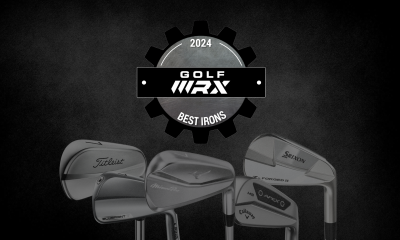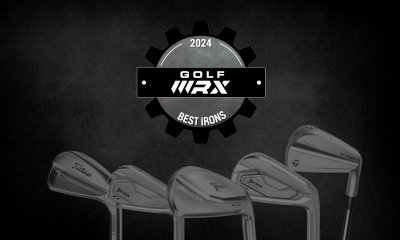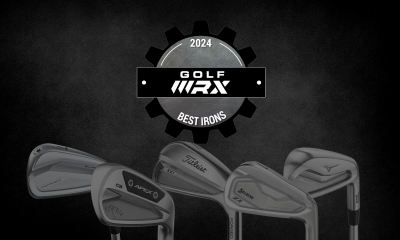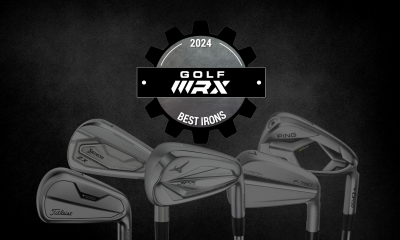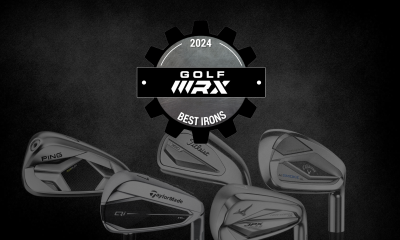Equipment
Best driver 2024: The best driver for you, as recommend by expert club fitters

What’s the best driver of 2024? This year, to answer that question, we have expanded our panel of expert fitters to help you find which of the 2024 drivers is best for your game, breaking down the candidates by clubhead speed.
Last year, we pointed out that we continue to exist in an era of not just maximizing distance but also minimizing the penalty of common misses for each player with the driver. Discretionary weight within the driver is also at an all-time high, so engineers can provide the widest range of performance characteristics in the metalwood era. This is only more true in 2024, with the pursuit of massive MOI (moment of inertia) driving several manufacturers’ offerings.
 Of course, custom fitting is essential to help you see results on every swing you make, and we believe the best way to find your personal best driver is to work with a professional fitter using a launch monitor.
Of course, custom fitting is essential to help you see results on every swing you make, and we believe the best way to find your personal best driver is to work with a professional fitter using a launch monitor.
That said, many golfers don’t have easy access to fitters, launch monitors, and club builders — so at GolfWRX, we have done a lot of the work to help you narrow down your short list of best drivers as you test out options for your best driver. We’re doing as much as we can to help you, short of a proper fitting!
Best driver of 2024: The categories
We have again broken our 2024 best drivers list into four total categories. Three are swing speed-based and the other forgiveness.
- Best driver for faster swing speeds 106+ mph
- Best driver for swing speeds 95-105 mph
- Best driver for slower swing speeds <94 mph
- Best driver most forgiving (coming tomorrow!)
We select this format because every golfer fits into one of these categories regardless of age, handicap, or gender, and for a lot of golfers, forgiveness is the number one factor when selecting a driver.
When we reconfigured our Best Driver process in 2021, we reached out to our trusted fitters to discuss how they sort through the endless head combinations available to golfers. Time after time, swing speed and forgiveness were the highest-ranked choices, after that, it comes down to adjustability to fit individual players and their trends.
This year, we have again worked internally to craft a survey that allowed the fitters to be honest—we want the truth just as much as you do, and to prevent anyone from feeling they couldn’t be, we allowed all of the results and quotes to remain anonymous.
Again, we can’t thank the fitters enough for their time, and we hope that in your search for your best driver for 2024, we can help you find it!
BEST DRIVER FOR 106 MPH AND ABOVE

Callaway Paradym Ai Smoke Triple Diamond

Drawing on the swing dynamics of thousands of real golfers, Callaway developed an all-new Ai Smart Face for its Paradym Ai Smoke drivers. Swing speed, club delivery, and face orientation prior to impact were considered to create club faces catered to optimal launch and tighter dispersion. Engineers targeted face design virtually everywhere across the face to leverage micro deflections for optimal spin on off-center shots struck anywhere on the face. Triple Diamond, Callaway’s tour/better player option is the most compact and neutral-to-fade biased in the Ai Smoke lineup, as would be expected. A 14-gram weight can be moved from front to back for spin reduction and to the rear for workability.
For the full technology breakdown, check out our launch piece.
Fitter notes
- As long as the golfer is finding the center of the clubface consistently at this swing speed, the AI Smoke Triple Diamond is an outstanding performer. Even misses slightly off-center aren’t penalized much distance-wise wise, and the head geometry does a great job of keeping the ball near the intended line.
- For a players driver to fly this straight it is a no-brainer. Very rarely do I see high-toe and low-heel strikes fly so similarly. This is the most forgiving and longest “players driver.”
- Simply put: fast and straight. This is the most impressive head I have seen on off-center strikes for a “players driver.” It sits as the best driver I have seen since the Ping G400 LST. The look, sound and feel check any box that you could have. It could be brought up in GOAT conversations.
- We have gotten to a point where technology in drivers is so good across the board, it’s hard for a driver to stand out. The Callaway Paradym AI Smoke Triple Diamond does just that. It’s consistently the fastest face in most of my fittings.
- Triple Diamond has a big old face. It sits a little bit more open so the guys with speed. It almost looks like it has a bit of loft to it, which is nice. So if you take an eight-degree Triple Diamond and you set it down, you’re like, man, this looks like it sits like a 10.5. So I think confidence-wise you’ll fit a lot more.
Titleist TSR3
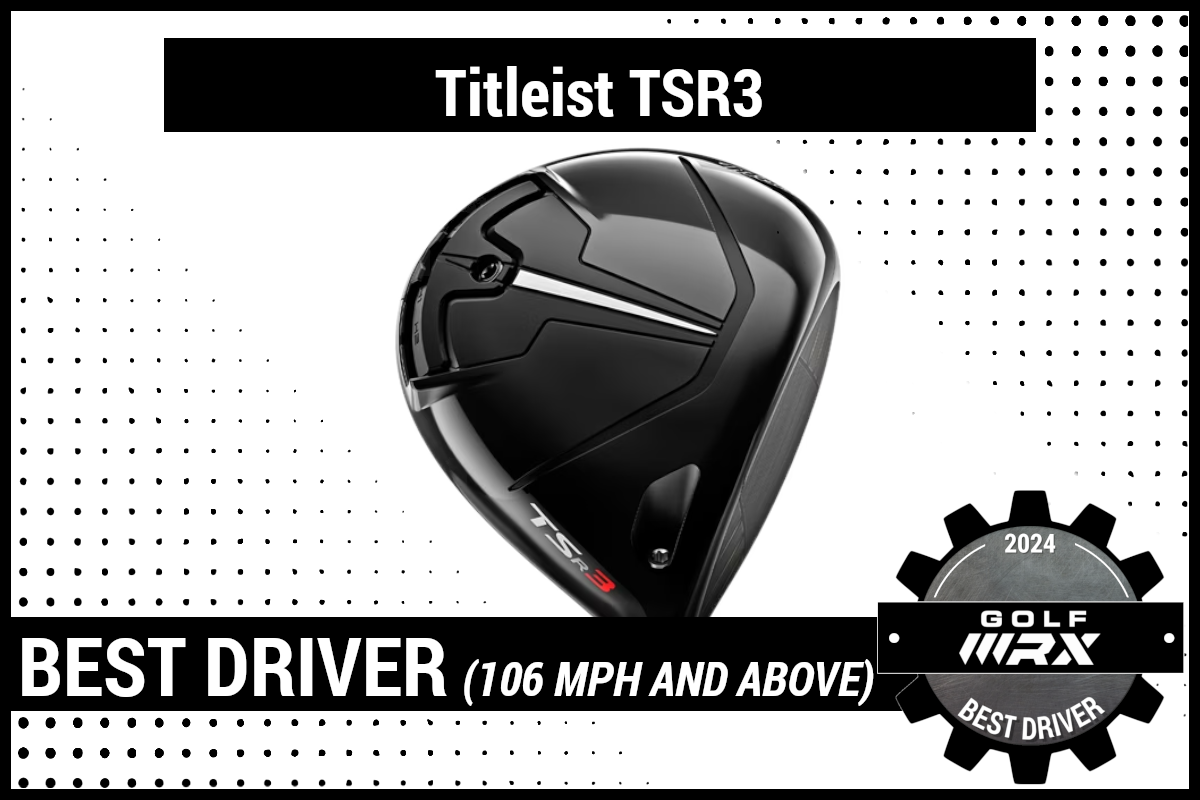
TSR is the next generation of the Titleist Speed Project that began more than six years ago with the TS series and continued with TSi models in 2020. Mid-launch, mid-spin TSR3 is the more adjustable option in a tour-preferred shape. It’s engineered for playability and precise CG positioning (thanks to a reimagined SureFit Adjustable CG Track System) and an improved sweet spot.
For the full technology breakdown, check out our launch piece.
Fitter notes
- Produces amazing ball speed for fast swing speeds while still offering great forgiveness. Still one of the best drivers out there for higher swing speeds, especially for those players who miss on the heel.
- The number one driver used on the PGA Tour. Don’t sleep on this ball speed machine! The classic pear shape is as clean-looking as it gets. It’s stable across the face for being a low spin head.
- Great product for the player looking for ball speed retention across the face while having a traditional look. Rear weight track allows players to really fine-tune the swing flaws.
- The best “players driver” still remains a top pick for fitters. The feel, looks and sound are exactly what you’d expect from a Titleist but packs the speed to compete with the top dogs.
- If you and I are chatting best drivers of 2035 I still think we’re gonna reminisce about TSR lineup. And also I think TSR three is just gonna go down as a, you know, a World Golf Hall of Fame driver. it’s, it’s so good. The amount of interchange of, like, interchangeable weight, weight moving that weight track actually does something because it’s wide enough and you can bash it out of the heel.
TaylorMade Qi10 LS

TaylorMade targets forgiveness, rather than distance, with its Qi10 family of drivers, thanks to the combined effects of a re-engineered Infinity Crown, perimeter mass distribution, and modified head shapes. The LS takes Qi10 Max technology puts it in a “better player” package. Qi10 LS is a more compact profile with interior mass distribution engineered for lower spin and launch. Aiding in this effort is an 18-gram sliding weight near the face that utilizes a new, more aerodynamic weight system. Weight is moved low and forward for greater MOI in the LS while keeping the club low-spin.
For the full technology breakdown, check out our launch piece.
Fitter notes
- Beauty and power. Clean look harkening back to the TaylorMade TP days of the mid-2000’s but all the technology of today. The weight adjustability is a huge bonus.
- FAST with tons of adjustability and a slightly open face angle.
- This was a big improvement on the previous generation. This flat-flying, low-spin bomber is great for a a player who struggles with spin and needs to lower launch and spin.
- Very few drivers can compete with the ball speed delivered by this driver.
Cobra Darkspeed LS
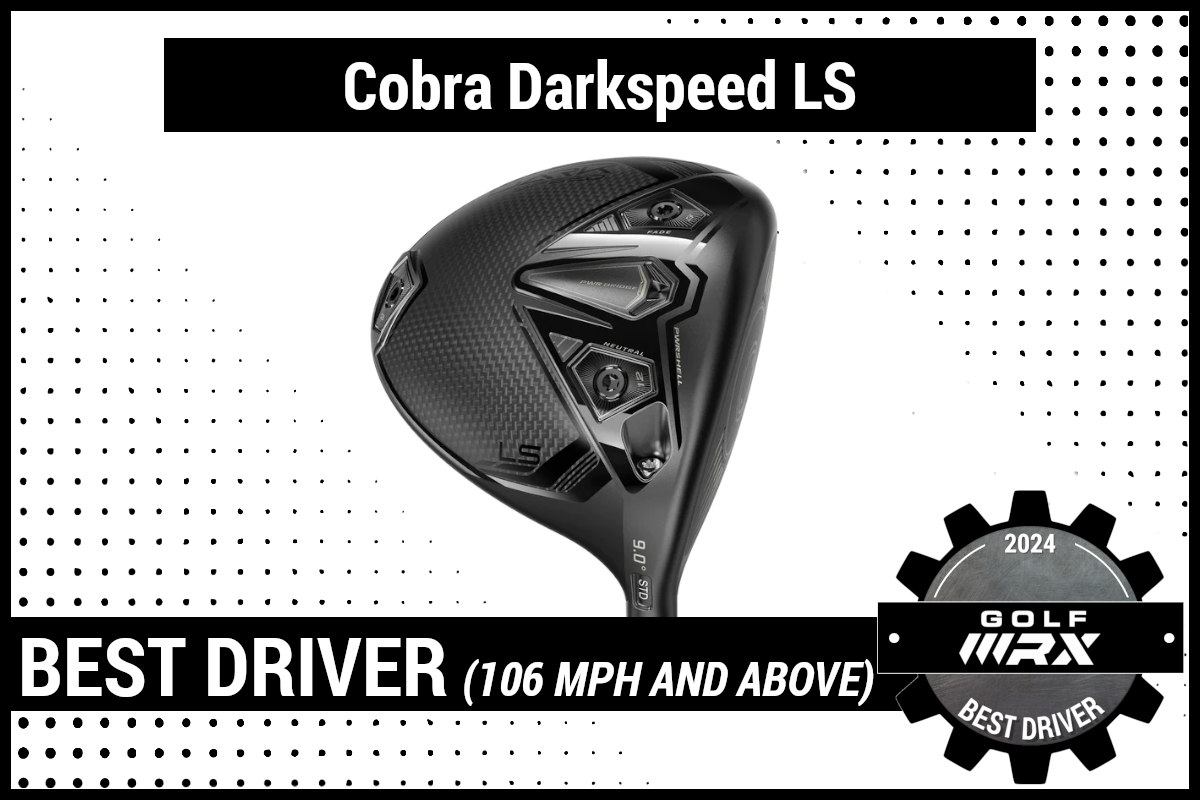
A re-engineered PWR-Bridge and weighting system, PWRSHELL, and H.O.T. Face Technologies are at the heart of the Cobra Darkspeed LS line. With the most compact profile in the lineup (albeit with a higher crown peak), Darkspeed LS is designed for high-clubhead-speed players seeking lower spin with shot shape control. For the Darkspeed LS, three weight ports with two three-gram weights and one 12-gram weight. Two ports are situated in the front of the club and one in the rear for players to dial in draw/fade or preference spin versus forgiveness.
For the full technology breakdown, check out our launch piece.
Fitter notes
- Ball speeds are elevated from previous models while improving look, sound and feel.
- Cobra is the most underrated driver company every year. The Aerojet was shockingly long a straight and the new Darkspeed LS has taken it to another level.
- It is shocking how straight the ball flight is.
- This driver tests the fastest for head speed and provides very good low spin consistency and a great sound.
- This is the fastest driver we have tested by far and is the dark horse that most people will sleep on. Once dialed in it is a monster driver with workability over last years product and more forgiveness as well.
Ping G430 LST
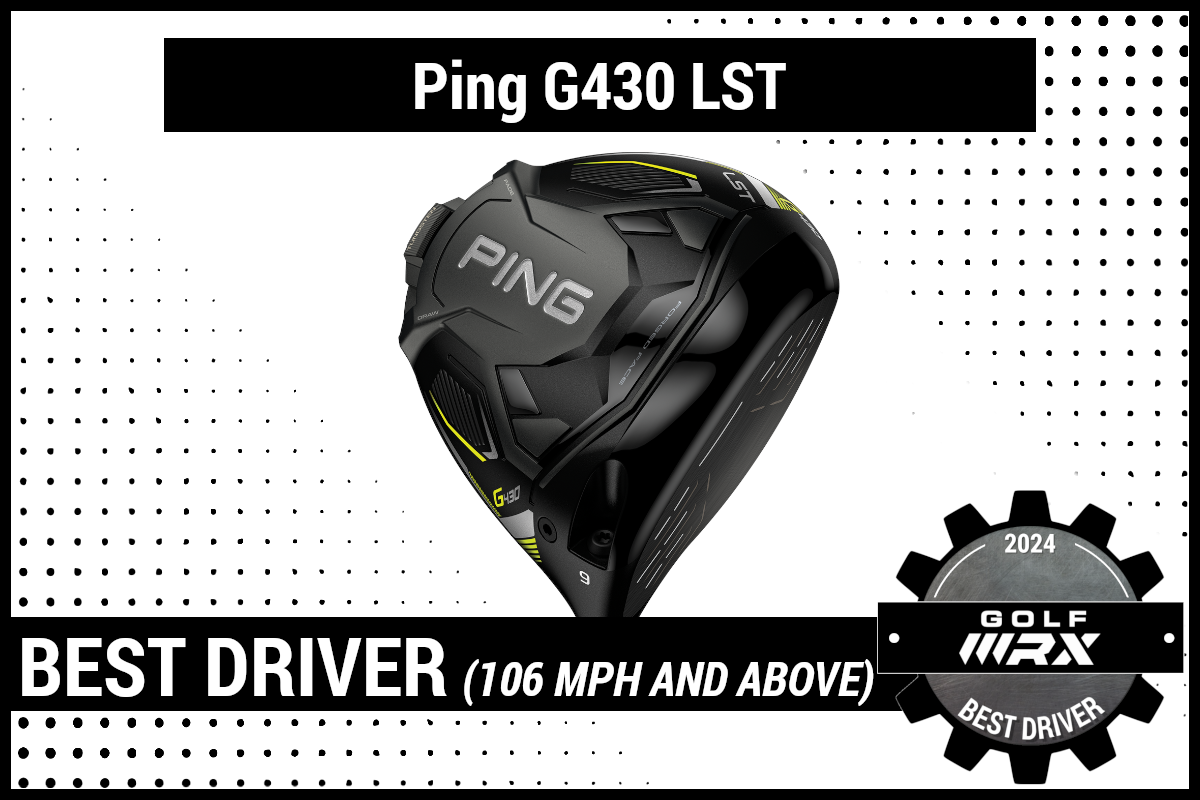
With a shallower and thinner VFT forged face design, Ping engineers sought to add speed and distance without undermining an element Ping drivers have been known for: forgiveness. Exclusive to the G430 LST, lightweight composite crown-covering Carbonfly Wrap technology is the major innovation in the series. It’s an eight-layer, one-piece composite covering the crown to save weight (four grams) and lower CG, creating a lower-spin, higher-MOI driver.
For the full technology breakdown, check out our launch piece.
Fitter notes
- Easily a top choice for last year, the story doesn’t change this year. The G430 LST is as stable as stable gets. For the guy who really pounds it. Much improved sound and feel from the G425 line.
- Great driver that is forgiving with a ton of adjustable options to dial in direction, lie angle, and lower spin.
- The most forgiving low spin driver on the market.
- Relatively forgiving head with the shape of a players head that doesn’t lose the speed battle very often either.
- The 9-degree head in the LST is such a spin killer. It goes really low and spins like zero. For that medium trajectory player, they can increase their launch angles and keep spin the same. You’re able to play more loft and not have spin go up. From a fitter’s standpoint, it gives us a little bit more leeway. In the low-spin option, that head truly is the most forgiving. I don’t know what Ping does, but they’ve got an ability to make drivers ridiculously easy to hit straight, and its up to their engineers to try to make them efficient and fast. The LST does an awesome job of that.
On Tour with Andrew Tursky
Callaway Paradym Ai Smoke Triple Diamond: Callaway staffers such as Xander Schauffele, Adam Hadwin and Nicolai Hojgaard have been quick adopters into the new Ai Smoke Triple Diamond driver, which is a spin-killing weapon that also offers forgiveness, a modern look, and a compact head shape.
Some Callaway driver users have also opted for the Triple Diamond S head, which has a slightly more compact look at address, or the Triple Diamond Max head, which offers slightly more forgiveness and a touch higher spin, but the Triple Diamond head remains the most popular model for company staffers on the PGA Tour.
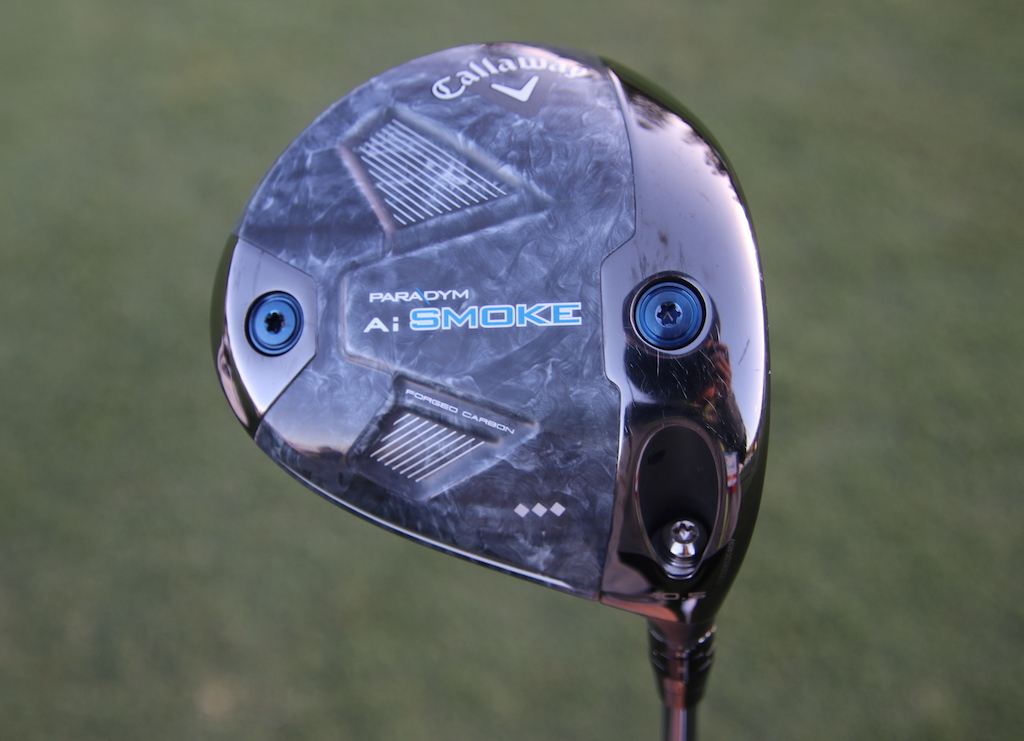
Xander Schauffele’s driver.
Titleist TSR3: The Titleist TSR3 blends good looks, forgiveness, workability, weight adjustability, and spin reduction into one, glossy black head that seems to fit everyone from 12-handicappers to the world’s best players.
PGA Tour players such as Justin Thomas, Wyndham Clark, Max Homa, Cam Young and Tom Kim are currently using the TSR3 model.
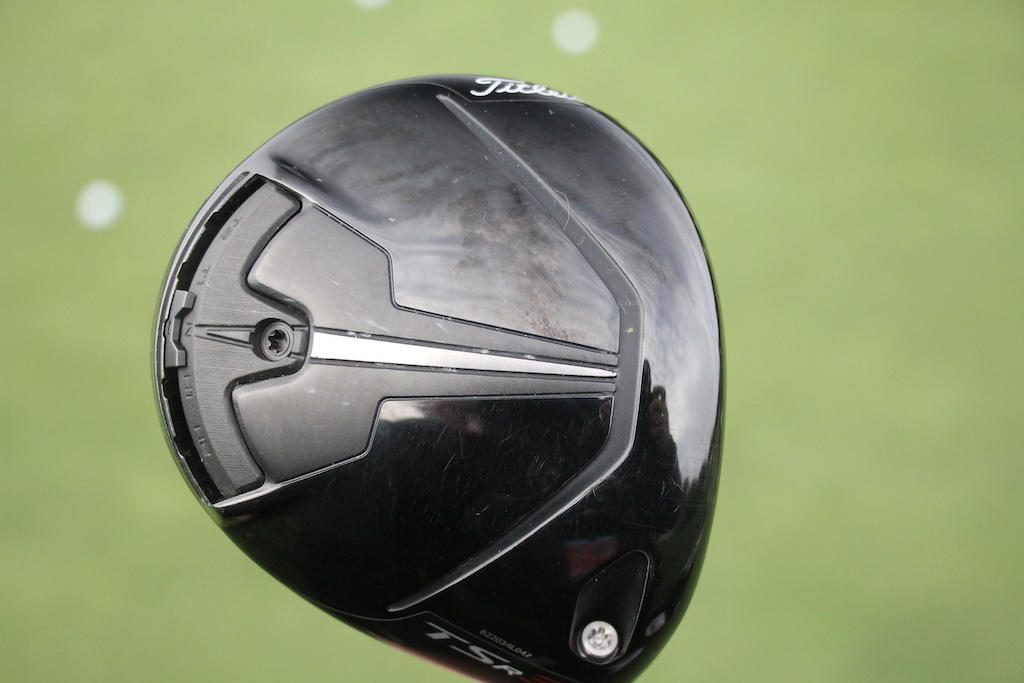
Justin Thomas’ driver.
Golfers that have used Titleist drivers in the past will find familiarity with the look, feel and sound of the TSR3 driver, but the new model provides a leap in distance and forgiveness compared to any Titleist predecessor that came before.
TaylorMade Qi10 LS: TaylorMade’s Qi10 LS is arguably the lowest-spinning driver of 2024, and it’s currently being played by the likes of Tiger Woods, Tommy Fleetwood, and Kurt Kitayama.
The driver is so low-spinning, actually, that players such as Rory McIlroy and Scottie Scheffler have opted for the Qi10 core model for a touch of added forgiveness and spin.
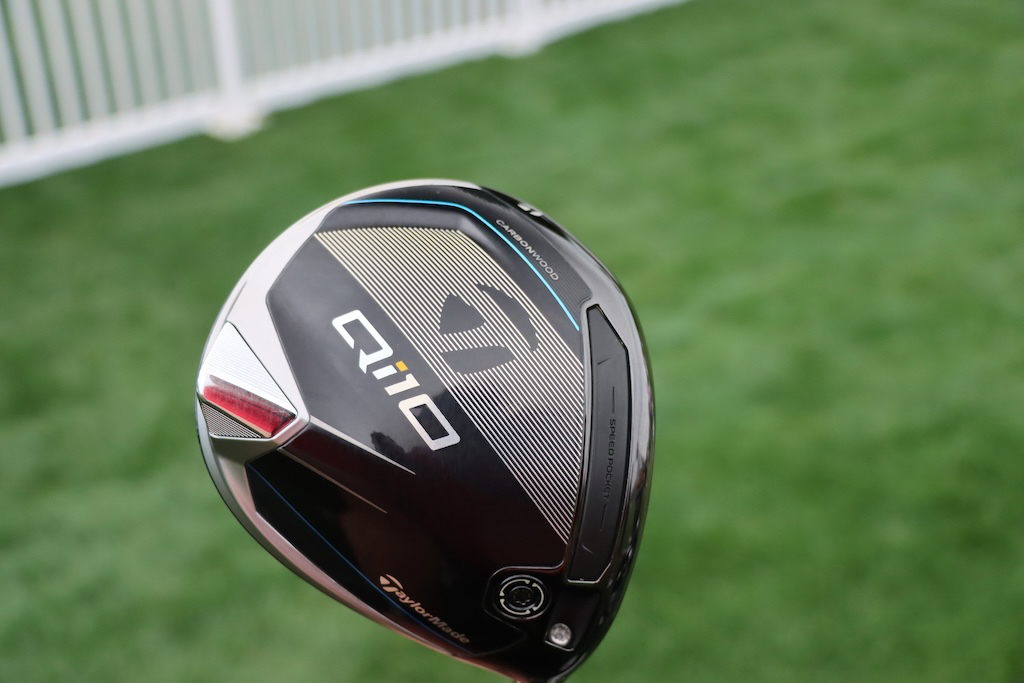
Scottie Scheffler’s driver.
If you’re a high-speed golfer looking to lower your spin rates off the tee, the logical place to start your testing is with the Qi10 LS driver. But don’t forget about the Qi10 core model, either, since both are being played by the world’s best TaylorMade staffers.
Cobra Darkspeed LS: Cobra’s new Darkspeed LS combines the stealthy looks and forgiveness of the Darkspeed platform, but provides serious spin-reducing performance with the LS head. The long-hitting Gary Woodland currently opts for the LS model. Rickie Fowler also started out 2024 using the Darkspeed LS head, but has since switched to the slightly more forgiving Darkspeed X head to help with his mis-hits.
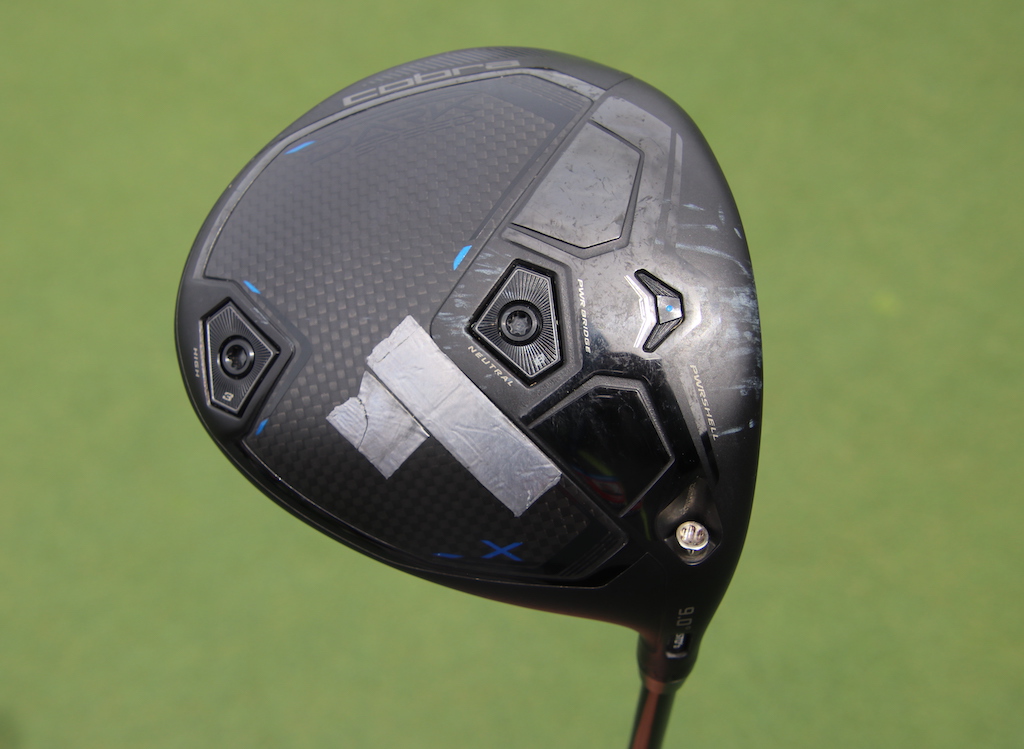
Rickie Fowler’s driver.
For high-speed players, the Cobra Darkspeed LS driver is one of the most forgiving low-spin options on the market.
Ping G430 LST: Ping has always been known to produce some of the most forgiving drivers available on the market, but its 430 LST model has proven to be one of the lowest-spinning models, too.
Austin Eckroat recently won the Cognizant Classic with a Ping G430 LST in the bag, and joining him on the list of fellow G430 LST users are Tony Finau, Corey Conners, David Lingmerth and Taylor Moore.
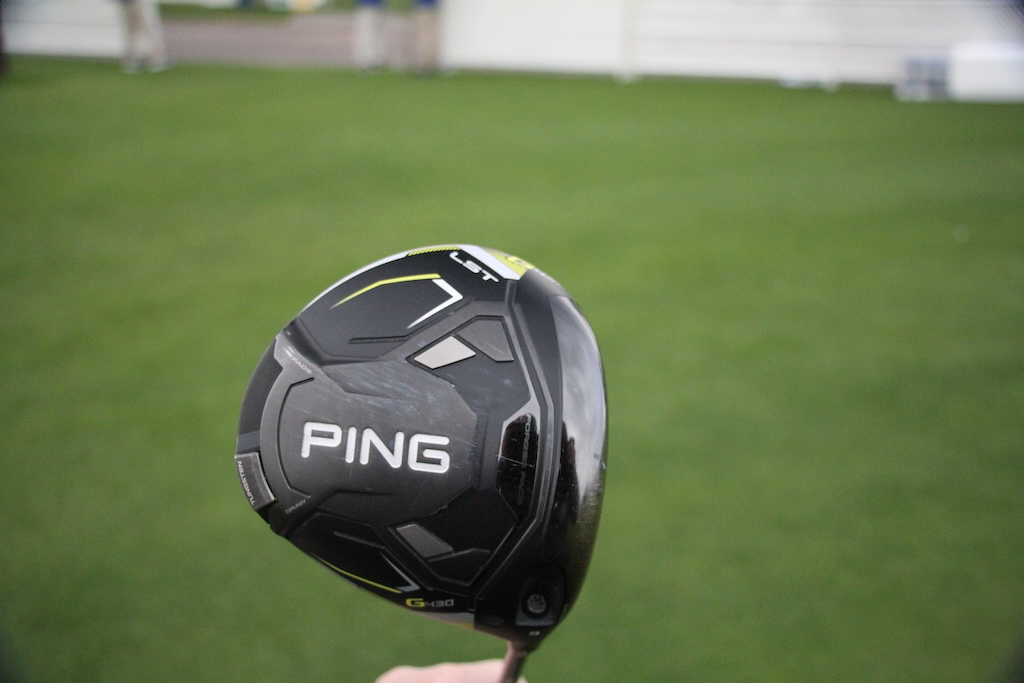
The G430 LST is a certified spin-killer with forgiveness, but don’t sleep on the more forgiving G430 10K model, either, as it’s garnered significant attention from PGA Tour players in recent months.
BEST DRIVERS FOR 95-105 MPH

Callaway Paradym Ai Smoke Max
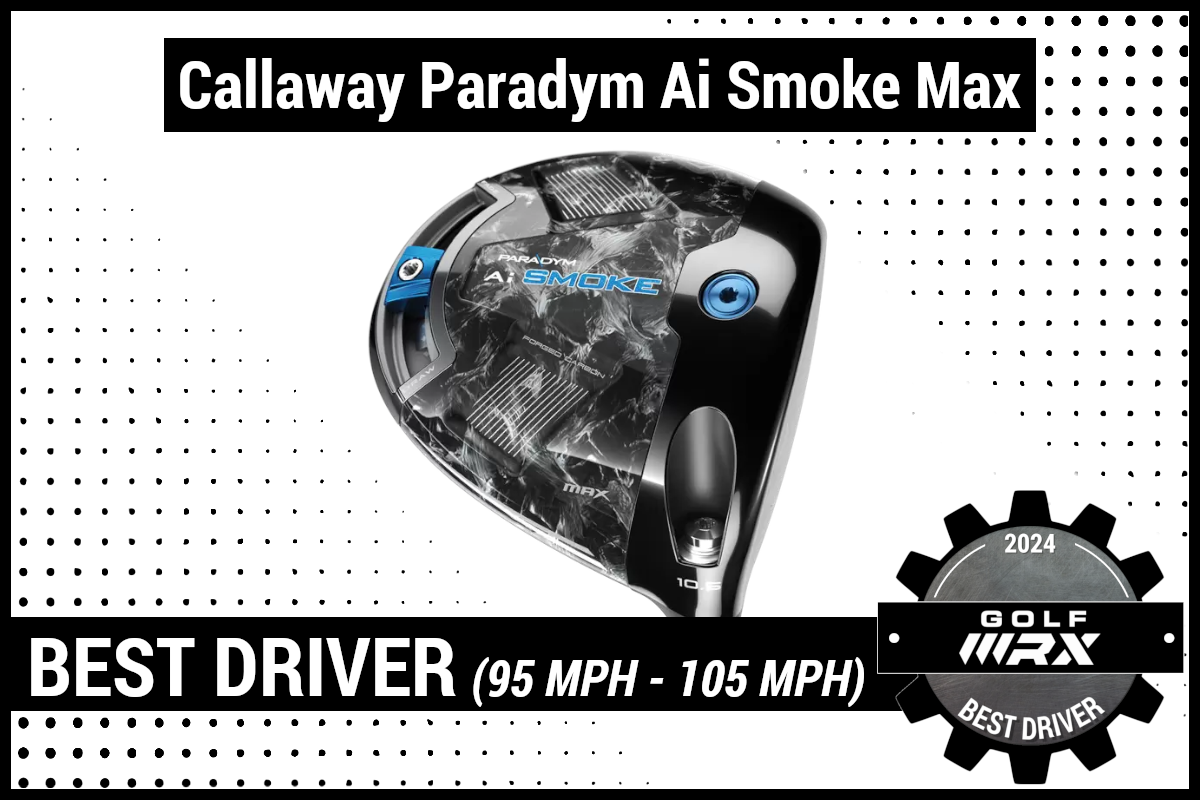
Drawing on the swing dynamics of thousands of real golfers, Callaway developed an all-new Ai Smart Face for its Paradym Ai Smoke drivers. Swing speed, club delivery, and face orientation prior to impact were considered to create club faces catered to optimal launch and tighter dispersion. Engineers targeted face design virtually everywhere across the face to leverage micro deflections for optimal spin on off-center shots struck anywhere on the face. Aimed at the widest swath of the fitting bell curve, Paradym Ai Smoke Max is the only driver in the lineup with an adjustable perimeter weight. According to the company, this allows up to 19 yards of shot shape adjustment.
For the full technology breakdown, check out our launch piece.
Fitter notes
- Callaway just continues to push the forgiveness and speed buttons, they are easy to hit and mishits go long and straight.
- Callaway is winning the driver battle in my opinion. Great feel and great numbers.
- Great combination of speed and forgiveness. Not the fastest and not the most forgiving but a great in-the-middle option.
- All around excellent performer this year. Straight and long, a good combination.
Titleist TSR2
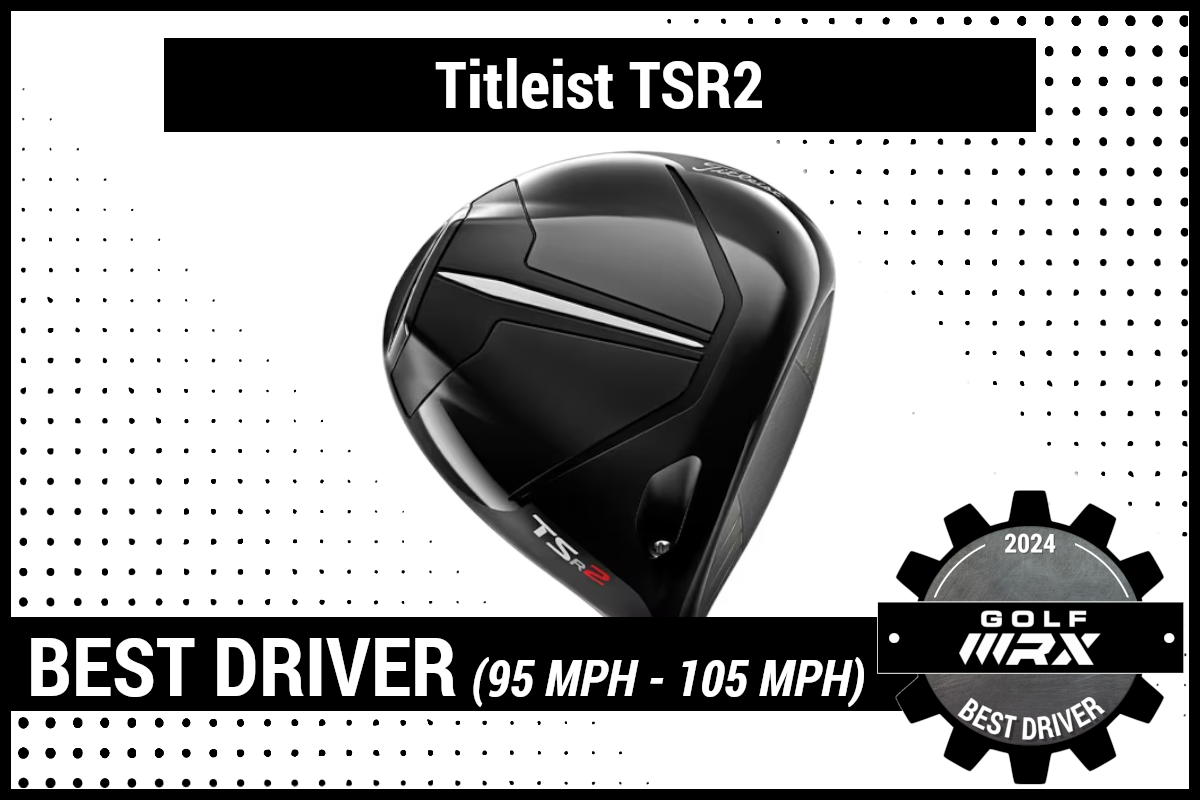
TSR is the next generation of the Titleist Speed Project that began more than seven years ago with the TS series and continued with TSi models in 2020. There are three models in the TSR line, which began tour seeding in June. TSR2 is a high-launch, low-spin “max” driver, balancing speed and stability that is designed for the player who makes contact across the face.
For the full technology breakdown, check out our launch piece.
Fitter notes
- The best in this category in terms of ball speed, spin, and stability. The TSR2 has been awesome for over a year and still reigns supreme in this category.
- We think this is the best combination of ball speed and dispersion in the marketplace. It has been since launching in fall of 2022. Titleist hit a home run with these drivers.
- It fits a huge, huge variety of players. Huge upgrade over TSi, in my opinion. The 2 was slow and it didn’t go as fast as the 3. It was a great driver, but it was a step down. This thing has all the power the TSR3 has. It looks awesome. But they didn’t sacrifice forgiveness. It’s great for that traditionalist who likes a clean, classic look but needs forgiveness out of it. And their adjustable cog allows us to fit a wide variety of players. I love this driver.
- This thing has been a staple on tour for a while now. The stability and forgiveness on off-center hits with this is great to not have a huge kick up in spin but still maintain good ball speed. Guys are seeing they can miss this driver on the toe or heal and the spin isn’t going to drastically go up or down compared to previous models
- TSR2 got the biggest upgrade in the TSR family over the previous model. Nice change in looks, but the increase in speed was much needed. This is equally as long as TSR3, just with more forgiveness.
TaylorMade Qi10
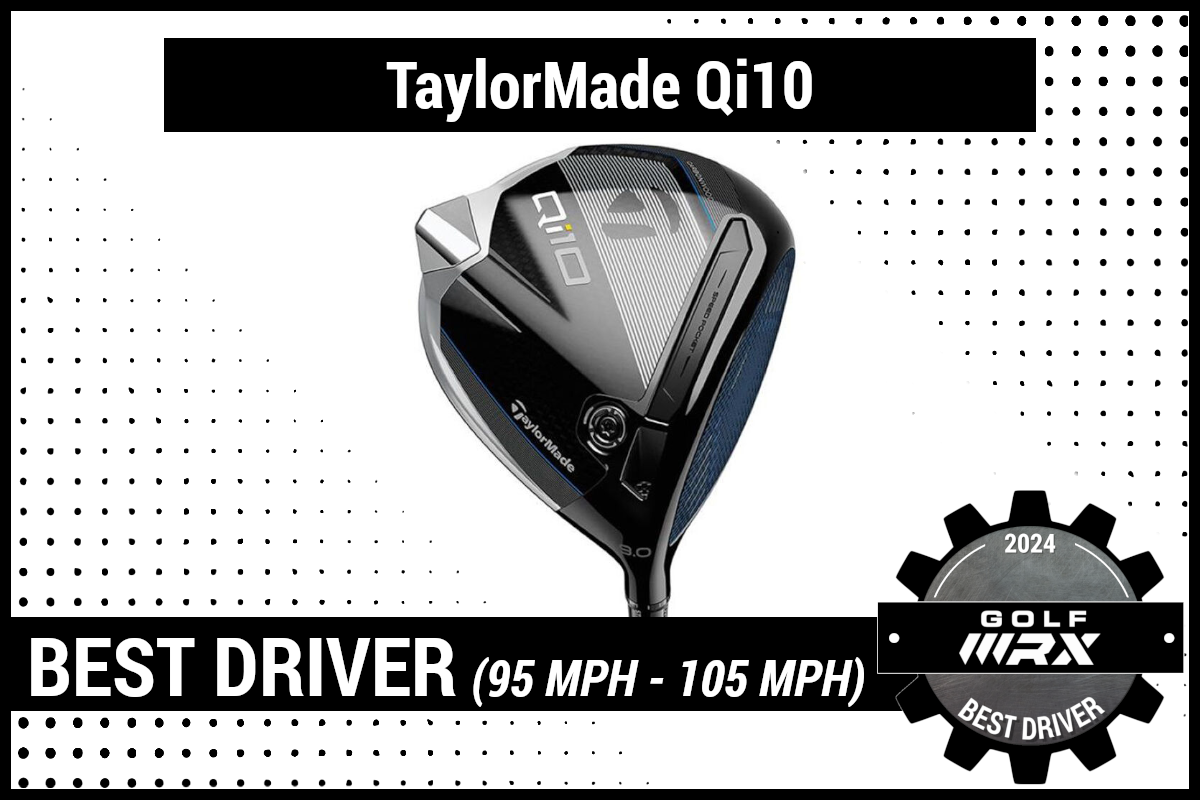
TaylorMade targets forgiveness, rather than distance, with its Qi10 family of drivers, thanks to the combined effects of a re-engineered Infinity Crown, perimeter mass distribution, and modified head shapes. Living between the Max and LS models regarding launch and spin, Qi10 is slightly smaller than Qi10 Max with a more traditional profile. It features a sole weight closer to the center of the face and a more centered rear weight for a more neutral flight bias.
For the full technology breakdown, check out our launch piece.
Fitter notes
- The Qi10 model allows my clients to produce high ball speeds without having too little spin. The driver produces a nice ball flight and excellent carry numbers.
- TaylorMade’s best driver in a few years. This head is going to fit a huge percentage of golfers.
- Really strong product that subtly helps a player not hook as much. Ball speed is there, as usual. Possibly the best option for the habitual high toe striker.
- Don’t sleep on the standard head. Stable across the face with Mid-spin and launch. A lot of tour players are switching to this head due to the consistency in launch and spin.
- Now we’re seeing Rory playing in it and, you know, like I said, it’s kind of the same thing. I think it’s actually gonna probably fit a fairly wide group. You talk about like that mid-to-lower spin, profile like somebody that needs to keep spin that are higher, higher speed guys. I think that’s gonna be a perfect driver for them.
Ping G430 Max
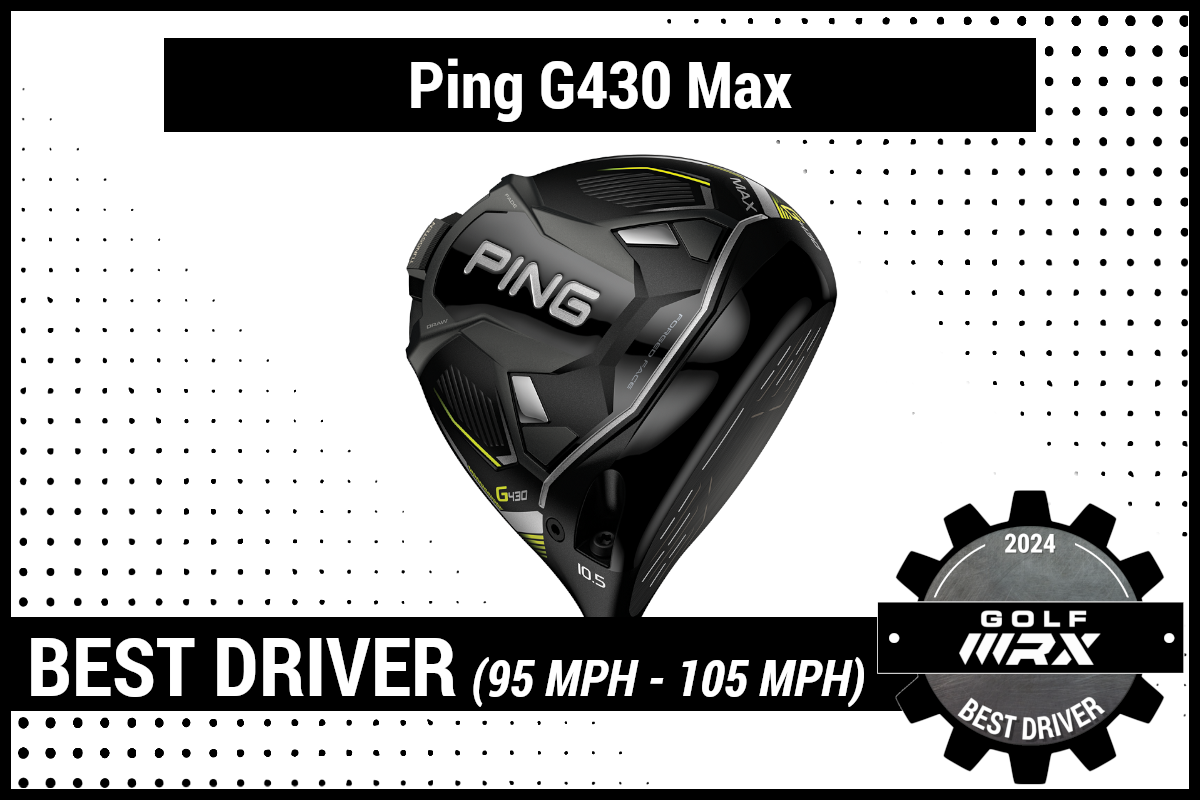
With a shallower and thinner VFT forged face design, Ping engineers sought to add speed and distance without undermining an element Ping drivers have been known for: forgiveness. For slower-swing-speed golfers, G430 Max can be custom built with lighter head weights. G430 Max is suitable for the widest segment of the fitting bell curve and features a 25-gram, high-density tungsten moveable back weight (±8 yards of shot shaping).
For the full technology breakdown, check out our launch piece.
Fitter notes
- Incredibly stable head, maintains ball speeds across the face for ideal launch characteristics.
- Extremely versatile driver head for a wide range of players. Ability to lighten the head also helps.
- Forgiveness and ball speed going back to the G400 days. Great look and the familiar sound of a Ping. Again, adjustability from the adapter to the rear weighting is awesome.
- The ability to crank it all the way up to 13.5 degrees when need is a major help. Pushes launch up without sacrificing ball speed.
- The Max head from Ping has always been one of, if not the best driver on the market. The G430 version is no different. Forgiveness that nobody else can touch along with great ball speed and surprisingly lowish spin.
Ping G430 Max 10K
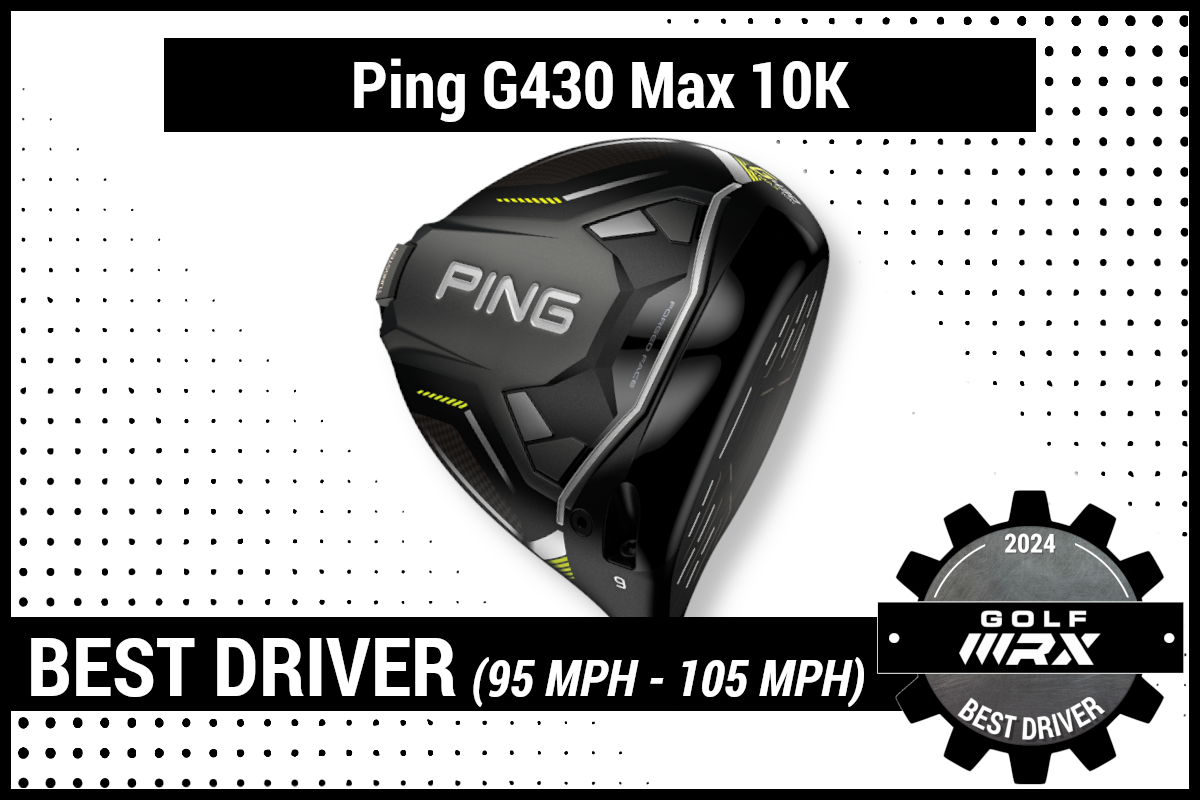
Ping touts the effects of a 28-gram fixed tungsten backweight working in combination with its 460cc multi-material head in achieving a 10,000 g-cm² measurement. Five grams of weight is saved from a lighter Carbonfly Wrap crown allowing for weight to be pushed to the perimeter of the club for increased forgiveness. The head profile is the largest in Ping history, pushed to the limits of heel-toe and front-back USGA restrictions.
For the full technology breakdown, check out our launch piece.
Fitter notes
- The closest thing to point-and-shoot that I have ever seen in a driver. Extremely forgiving while still maintaining a lower spin rate.
- The best driver Ping has made, yes, I know how big of a statement that is.
- This driver is incredible. For players to tend to spin the ball too low it is absolutely cheating. The driver simply wants to fly straight. We’ve seen the balls speeds increased from the LST head as well as the spin being 2-300 RPM’s higher. For guys with speed that spin it low, there’s really no reason not to be hitting this driver.
- This driver has performed will across all swing speeds. As stated before its cheating when it comes to left/right dispersion.
- Guys who struggle with any sort of consistent strike pattern, like it’s gonna do a good job of keeping it in front of them. I think it’s a little bit more of a go-to when you get somebody who hits it all over the face, just to help them hit it straighter…
BEST DRIVERS FOR 94 MPH AND BELOW

Ping G430 Max 10K
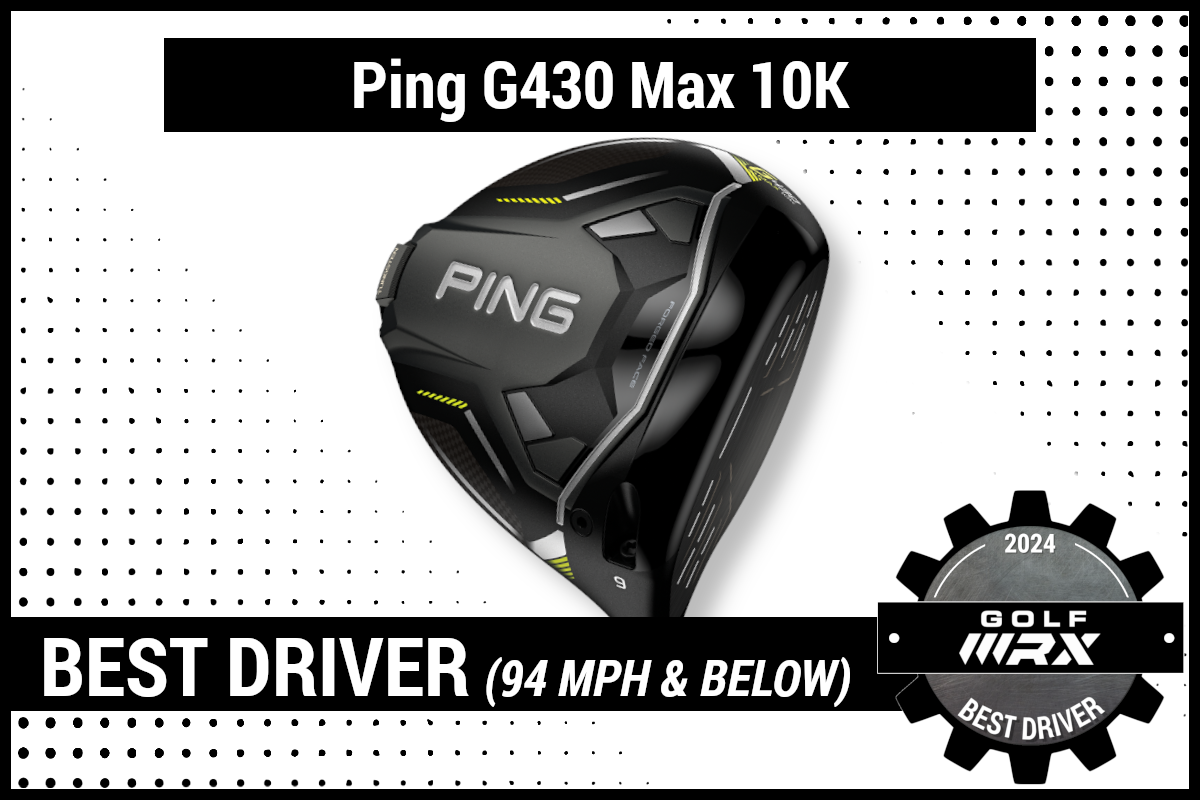
Ping touts the effects of a 28-gram fixed tungsten backweight working in combination with its 460cc multi-material head in achieving a 10,000 g-cm² measurement. Five grams of weight is saved from a lighter Carbonfly Wrap crown allowing for weight to be pushed to the perimeter of the club for increased forgiveness. The head profile is the largest in Ping history, pushed to the limits of heel-toe and front-back USGA restrictions.
For the full technology breakdown, check out our launch piece.
Fitter notes
- Straight & forgiving with no sacrifice in ball speed. The fact that some of their tour staff have gone into this head SCREAMS the performance is real.
- The most forgiving driver on the market. You get the forgiveness of the Max head and LST in one driver. Low launch and low spin with really good stability across those face on those off-center hits.
- This is the driver to beat this year. So much forgiveness and great for any swing speed.
- Very forgiving and comes off of the face well.
- It is the best driver on the market hands down, and I don’t care if you swing 75 or 105. I swear you can hit that thing anywhere on the face and it just performs the exact same.
TaylorMade Qi10 Max
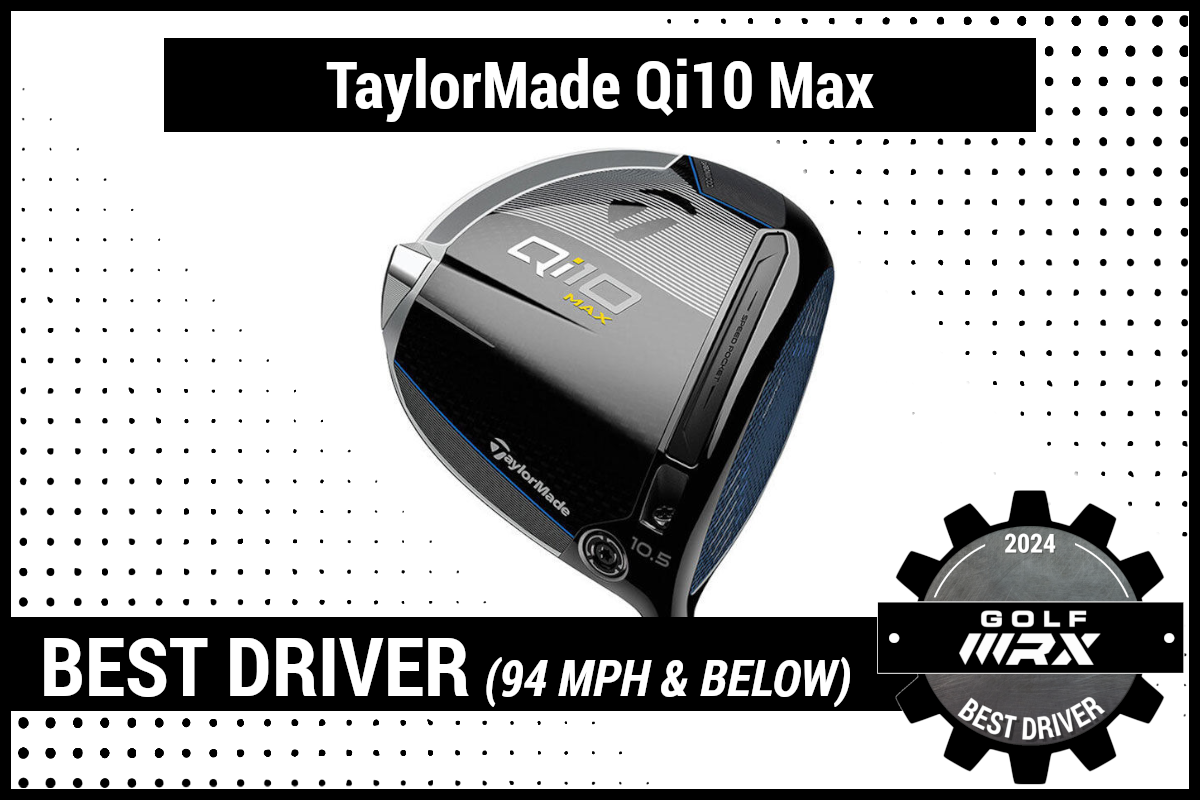
TaylorMade targets forgiveness, rather than distance, with its Qi10 family of drivers, thanks to the combined effects of a re-engineered Infinity Crown, perimeter mass distribution, and modified head shapes. The undisputed star of TaylorMade’s Quest for Inertia — the company’s bid for “max forgiveness and max accuracy” while continuing to deliver top-of-the-line ball speeds. The largest profile in the lineup, the Max features an incredible MOI of 10,000 g-cm².
For the full technology breakdown, check out our launch piece.
Fitter notes
- Maximum speed and forgiveness. Tends to still spin low enough for optimum launch conditions.
- The Max is doing the best out of the 3 heads for me. It has a ton of forgiveness while still keeping spin numbers down and maximizing distance.
- Very good driver to maintain ball speeds on off-center strikes.
- Ultra forgiving with incredible ball speeds. This thing spins well and goes straight. TM is onto something with the driver.
Callaway Paradym Ai Smoke Max

Drawing on the swing dynamics of thousands of real golfers, Callaway developed an all-new Ai Smart Face for its Paradym Ai Smoke drivers. Swing speed, club delivery, and face orientation prior to impact were considered to create club faces catered to optimal launch and tighter dispersion. Engineers targeted face design virtually everywhere across the face to leverage micro deflections for optimal spin on off-center shots struck anywhere on the face. Aimed at the widest swath of the fitting bell curve, Paradym Ai Smoke Max is the only driver in the lineup with an adjustable perimeter weight. According to the company, this allows up to 19 yards of shot shape adjustment.
For the full technology breakdown, check out our launch piece.
Fitter notes
- Probably the most user-friendly new driver on the market for 2024. Launches nice and high, moveable weight track to dial in the ideal CG along with the adapter. Great looks, a slightly easier face to turn over, and rock-solid feel that’s easy to launch.
- Some of the highest ball speeds in testing, very easy to square up, plenty of adjustability.
Very forgiving head that looks great at address and with the slide weight you can help directional misses and great ball speed here as well. - The forgiveness across the face allowing more ball speed on misses plus the adjustable rear weighting track is outstanding. Clean look at address with the carbon top and better top line framing the ball.
Cobra Darkspeed Max
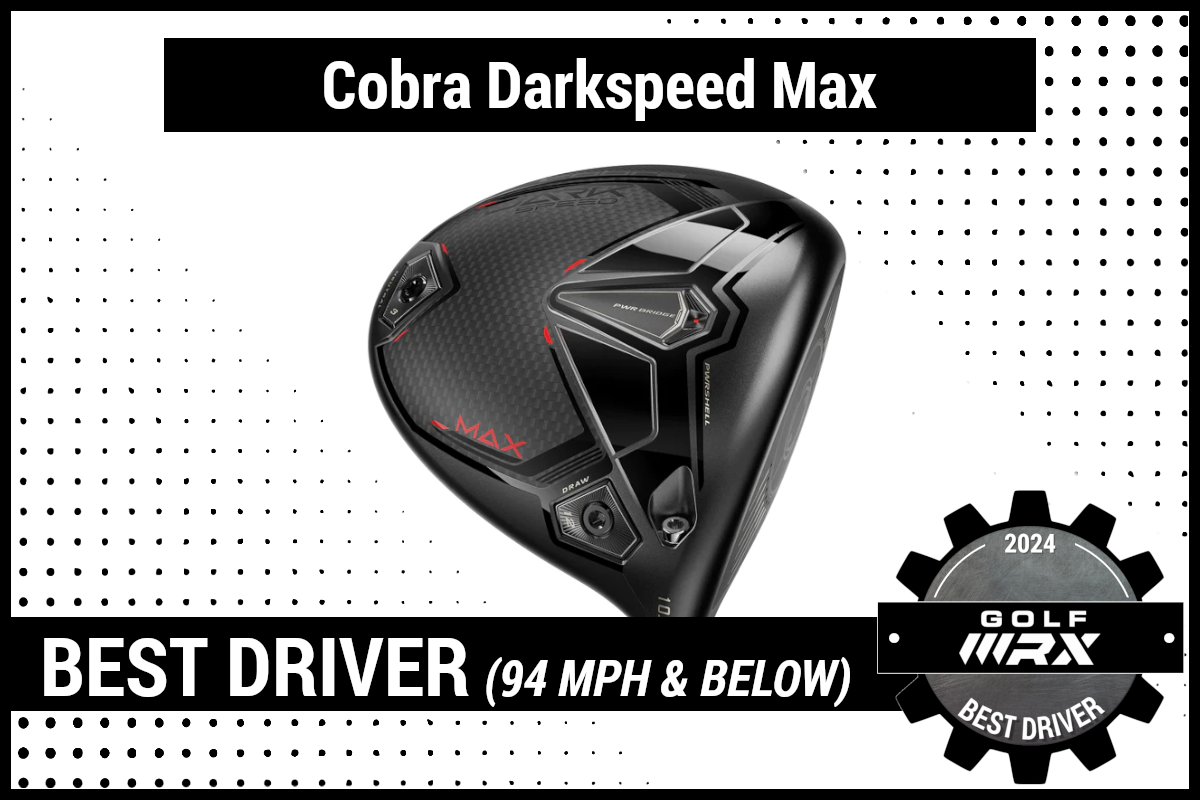
A re-engineered PWR-Bridge and weighting system, PWRSHELL, and H.O.T. Face Technologies are at the heart of the Cobra Darkspeed LS line. With the most compact profile in the lineup (albeit with a higher crown peak), Darkspeed LS is designed for high-clubhead-speed players seeking lower spin with shot shape control. The Max, Cobra’s draw-biased model is built for the player who needs forgiveness. Depending on the weight configuration, either greater forgiveness or more draw bias can be targeted.
For the full technology breakdown, check out our launch piece.
Fitter notes
- Cobra drivers keep getting better, very easy to hit and forgiving without sacrificing control.
- Really great looking, all blacked out is really eye-pleasing. The Darkspeed Max is fast and very stable through the hitting zone.
- We love the adjustability Cobra offers with the sole weights in this design. The driver is sleek and fast while providing great forgiveness.
- Great forgiveness, good launch/spin profile for most players, and enough adjustability to make it fit most swing profiles.
Titleist TSR1
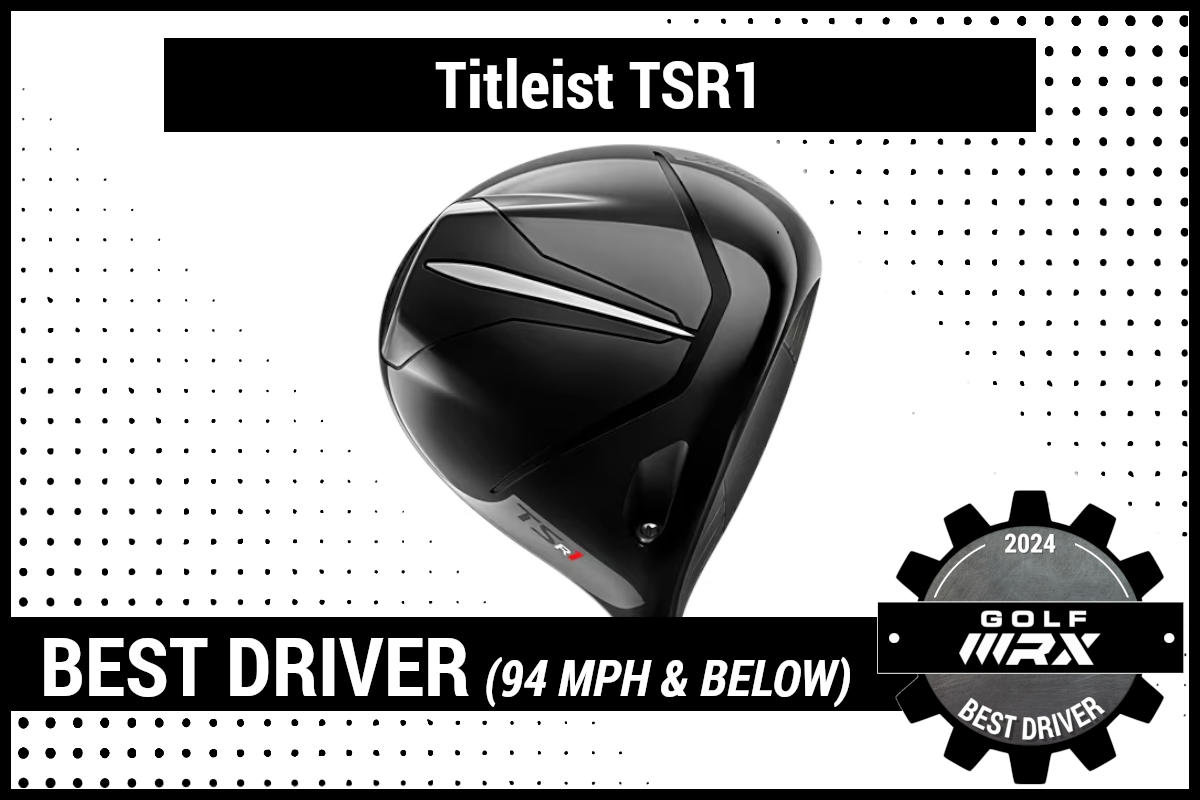
According to Titleist, the new 460cc TSR1 driver weighs a total of 40 grams lighter than the TSR2 thanks to a lighter headweight, 40-gram stock shaft, and a lighter stock grip. Like the other TSR drivers, the TSR1 has Multi-Plateau Variable Face Thickness to boost speed on off-center hits, and the CG (center of gravity) is placed rearward in the heads to increase launch and height.
For the full technology breakdown, check out our launch piece.
Fitter notes
- The Titleist TSR1 is an excellent option for the player who needs to increase their carry distance. The lightness of the head allows players with less club speed to produce higher launch angles without increasing spin.
- This lighter-weight head is great for reducing swing weight for slower players and doesn’t sacrifice ball speed. Much like its siblings in the TSR family this driver launches and spins well while producing awesome ball speed.
- Easy to hit, easy to launch. Good ball speed without spinning too much. Looks and feels great for a niche market.
- Fantastic option for those looking for a little help with creating speed through lighter equipment. Many of the lighter options on the market have a pre-built-in draw bias. Many players out there who want to test lighter equipment but don’t fight a slice. This is the best option on the market for that scenario.
- The TSR1 offers a little less headweight which can help dramatically reduce the weight of the club and ease the user experience. While a lighter club doesn’t always offer more speed, it can dramatically improve a player’s balance through the swing and help them hit the ball better. Titleist remains on top.
Best driver of 2024: Meet the fitters
- Adam Rathe: Club Champion
- Adam Scotto: Club Champion
- Adam Seitz: Club Champion
- Aidan Mena: Club Champion
- Alex Dice: Carl’s Golfland
- Alex Praeger: Club Champion
- Ben Giunta: The Tour Van
- Blake Smith, PGA: True Spec
- Bo Gorman: True Spec
- Brad Coffield: Carl’s Golfland
- Brett Ott: Club Champion
- Brian Riley: Club Champion
- Cameron Scudder: Club Champion
- Carmen Corvino: True Spec
- Christian Sandler: Club Champion
- Clare Cornelius: Cool Clubs
- Dan Palmisano: Club Champion
- Dane Byers: Club Champion
- Darren Joubert: Club Champion
- Dennis Huggins: Club Champion
- Drew Koch: Club Champion
- Eric Touchet: Touchet Performance Golf
- Erik Gonzales: Club Champion
- Evan Morrison: Club Champion
- Gus Alzate: True Spec
- Jake Medlen: Stripe Show Club Fitters
- Jake Woolston: Club Champion
- Jake Wynd: Club Champion
- Jay Marino: Club Champion
- Jeremy Olsen: Club Champion
- Jim Yenser: Club Champion
- Joe Stefan: Club Champion
- Joey Simon, PGA: Club Champion
- Jonathan Kaye: Club Champion
- Jordan Patrick: True Spec
- Jordan Rollins: Club Champion
- Kevin Arabejo: Club Champion
- Kevin Downey: Club Champion
- Kirk Oguri: Pete’s Golf
- Kyle Lane: Club Champion
- Kyle Murao: Club Champion
- Marc Roybal: True Spec
- Mark Hymerling: Club Champion
- Mark Knapp: Carl’s Golfland
- Matt Miller: Club Champion
- Matt Rish: Club Champion
- Matthew Gandolfi: Club Champion
- Mike Martysiewicz: Club Champion
- Mike Weis: Club Champion
- Mitch Schneider: Club Champion
- Nicholas Barone: Club Champion
- Nick Sherburne: Club Champion
- Nick Waterworth: Haggin Oaks
- Preston Vanderfinch: Club Champion
- Rick Lane: Club Champion
- Rob Anderson, PGA: Club Champion
- Russell Hubby: Club Champion
- Ryan Fisher: Grips Golf
- Ryan Grimes: Club Champion
- Ryan Johnson: Carl’s Golfland Bloomfield Hills
- Sam Kim: True Spec
- Scott Sikorski: Club Champion
- Scott Felix: Felix Club Works
- Scott Trent: Club Champion
- Sean Pfeil: Club Champion
- Shaun Fagan: True Spec
- Steve Harrow: Club Champion
- Tad Artrip: Club Champion
- Thomas Mattaini: Pull the Pin
- Tony Rhode: True Clubs
- William Buse: Club Champion
- William Cho: NovoGolf
- William Fields: Club Champion
Conclusion
The fitters consulted for this piece have accumulated data from thousands of fittings with golfers just like you. From beginners to tour players, their feedback and information can’t be undervalued, and we are, as always, grateful for their time and participation! If any of them happen to be in your area, be sure to check them out!
Now it’s your turn: Everybody swings the club differently, and everybody has their own experience with a driver in hand. We want to hear from you. Let us know in the discussion thread linked below: What driver are you using this year? What did you switch from? What performance gains did you find in your own game?
- LIKE64
- LEGIT9
- WOW7
- LOL5
- IDHT1
- FLOP9
- OB4
- SHANK27
Whats in the Bag
Matteo Manassero WITB 2024 (June)

- Matteo Manassero what’s in the bag accurate as of the U.S. Open. More photos from the event here.
Driver: Titleist TSR3 (10 degrees, A1 SureFit setting)
Shaft: Fujikura Ventus TR Red 6 X


3-wood: Titleist TSR2 (15 degrees, A1 SureFit setting)
Shaft: Graphite Design Tour AD IZ

Hybrid: Titleist TSR3 (19 degrees, A1 SureFit setting)
Shaft: Graphite Design Tour AD IZ Hybrid 85 X
Irons: Titleist U505 (2), Titleist T200 (4), Titleist T100 (4-PW)
Shafts: Graphite Design Tour AD IZ Hybrid 95 X (2), Project X 6.5 (4-PW)


Wedges: Titleist Vokey Design SM10 (50-08F, 54-10S), WedgeWorks (58-A+)
Shafts: Project X Wedge 6.5

Putter: Scotty Cameron SB-2

Grips: Golf Pride MCC Align
Ball: Titleist Pro V1x
See more in-hand photos of Matteo Manassero’s clubs here.
- LIKE1
- LEGIT0
- WOW0
- LOL0
- IDHT0
- FLOP0
- OB0
- SHANK0
Equipment
Patrick Cantlay switched driver, irons ahead of the U.S. Open

Editor’s note: This is an excerpt of an article our Andrew Tursky filed for PGATour.com’s Equipment Report. Patrick Cantlay abruptly ended his brief experiment with Ping Blueprint S irons, returning to his previous gamers. He also elected to upgrade to Titleist’s new GT2 driver. Read the full piece here.
Cantlay’s familiar 718 AP2 irons are unique because they have custom grinds on their leading edges, helping Cantlay achieve the precise turf interaction he prefers at impact.
Irons aren’t the only news coming out of Cantlay’s equipment setup this week at the 2024 U.S. Open, however.
Cantlay conducted lengthy driver testing on-site at Pinehurst this week between his older TSR2 driver model, and Titleist’s new GT2 model.
Then, on Wednesday afternoon, he posted a photo of the new GT2 driver to his Instagram, likely confirming the winner of his driver tests. As an equipment free agent, Cantlay’s post on social media says a lot about how much he likes the new driver.
As per our previous Equipment Report, PGA TOUR pros are seeing increased distance, more consistent spin rates, and a more muted sound from Titleist’s new, unreleased drivers thus far. Additionally, Titleist Tour rep J.J. Van Wezenbeeck told GolfWRX.com on Wednesday at the U.S. Open that pros are gravitating toward the GT2 model due to its ease of launch, forgiveness, and overall head shape at address, in addition to the previously mentioned upgrades in the GT lineup.

*featured image via Patrick Cantlay on Instagram.
- LIKE4
- LEGIT1
- WOW1
- LOL1
- IDHT0
- FLOP1
- OB0
- SHANK0
Equipment
Club Junkie WITB league night, week 9: Looking for forgiveness

Last week was tough in some windy conditions, so this week, BK is going with a more forgiving setup. Some Ping irons lay the foundation and the PXG Black Ops 7-wood is a great option for use off the tee.
Driver: Cobra Darkspeed X (10.5 degrees, neutral setting)
Shaft: UST Mamiya Lin-Q M40x TSPX Blue 6F5
3-wood: Mizuno ST-Z 230 (15 degrees, -1 setting)
Shaft: Project X HZRDUS Smoke Green RDX 75 6.5
7-wood: PXG 0311 Black Ops (21 degrees, -1 loft, flat)
Shaft: Nippon Regio Formula MB+ 75x
4-iron: Titleist T200
Shaft: Aerotech Steelfiber i110cw Stiff
Irons: Ping i230 (5-PW)
Shaft: Fujikura Axiom 105s
Wedge: Titleist Vokey Design SM10 (50.08F)
Shaft: UST Mamiya Dart V 105 Wedge F4
Wedge: TaylorMade MG4 TW (56-12)
Shaft: True Temper Dynamic Gold TI 115 Wedge
Wedge: TaylorMade MG4 TW (60-11)
Shaft:True Temper Dynamic Gold TI 115 Wedge
Putter: L.A.B. Mezz.1 Max
Shaft: Accra x L.A.B. Graphite
Ball: Titleist ProV1 Enhanced Alignment
- LIKE1
- LEGIT0
- WOW0
- LOL0
- IDHT0
- FLOP0
- OB0
- SHANK0
-

 Product Reviews2 weeks ago
Product Reviews2 weeks agoFujikura 2024 Ventus Blue with VeloCore Plus review: Club Junkie Reviews
-

 19th Hole2 weeks ago
19th Hole2 weeks agoCharley Hull reveals how a fan slipped her his phone number and asked her on a date during Women’s U.S. Open
-

 19th Hole4 days ago
19th Hole4 days agoBrooks Koepka rules incident comes under scrutiny at LIV Golf Houston
-

 Equipment1 week ago
Equipment1 week agoDetails on Justin Thomas’ gas station putter pickup
-
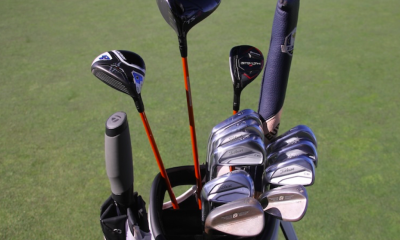
 Whats in the Bag2 weeks ago
Whats in the Bag2 weeks agoRobert MacIntyre’s winning WITB: 2024 RBC Canadian Open
-

 Equipment6 days ago
Equipment6 days agoPros weigh in on Titleist’s new GT drivers at the Memorial
-

 Tour Photo Galleries1 week ago
Tour Photo Galleries1 week agoPhotos from the 2024 Memorial Tournament
-

 19th Hole2 weeks ago
19th Hole2 weeks agoLexi Thompson announces retirement from golf



